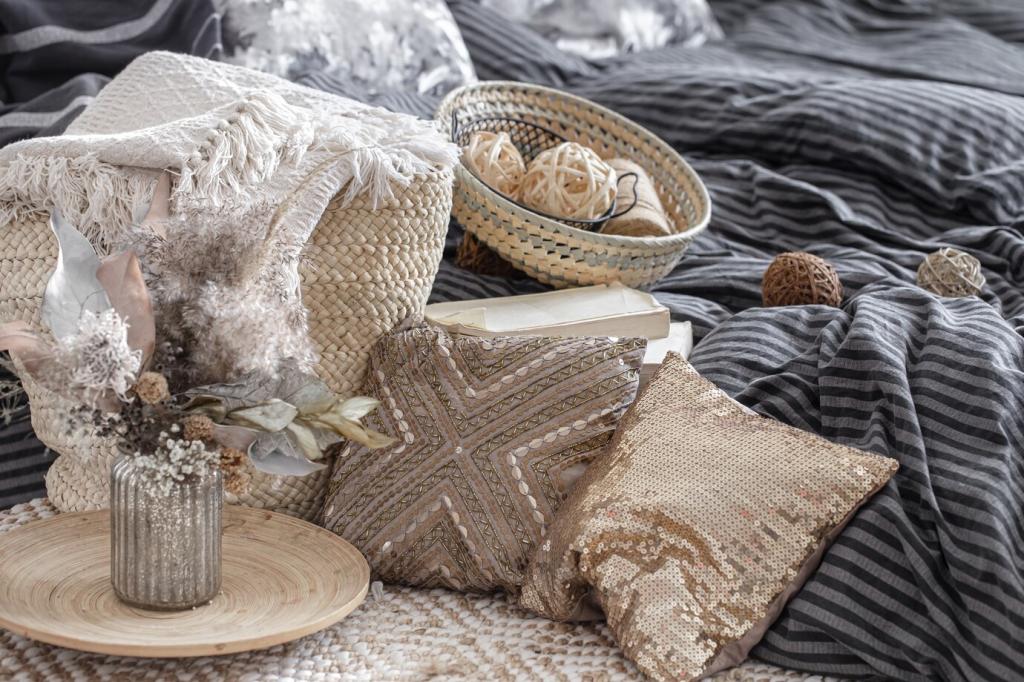Recycled Materials in Contemporary Interior Design
The integration of recycled materials has become a hallmark of contemporary interior design, reflecting a shift toward sustainability without compromising on style or comfort. Designers are responding to environmental concerns and consumer demand by sourcing reclaimed resources, incorporating them creatively, and creating informed spaces that are both eco-friendly and aesthetically pleasing. Whether in residential, commercial, or hospitality contexts, recycled materials are redefining the possibilities of modern interiors and demonstrating that sustainability and sophistication can coexist harmoniously.

Environmental Benefits of Recycled Materials
Utilizing recycled materials in interiors dramatically reduces the demand on natural resources and minimizes waste that would otherwise contribute to landfills. By repurposing items such as reclaimed wood, upcycled metals, and reimagined textiles, designers can help conserve energy, lower carbon emissions, and foster a more circular economy. The ripple effect of these choices extends beyond the physical spaces themselves, as they inspire a broader audience to embrace more responsible consumption habits and support the ongoing movement toward greater environmental stewardship.

Changing Consumer Attitudes
Contemporary clients are increasingly attuned to the environmental impact of their choices. With greater access to information, they are demanding greater transparency from designers and manufacturers alike. Recycled materials have gained a new cachet, signaling a preference for authentic, meaningful design. For many homeowners and businesses, the provenance of a material now holds as much importance as its appearance or utility. This changing attitude is prompting the industry to adapt, innovate, and offer more options, ensuring that eco-consciousness is seamlessly integrated into high-end design.
Innovative Recycled Materials Transforming Spaces
Reclaimed wood is a perennial favorite in interior design, appreciated for its warmth, character, and sustainability. Modern techniques have elevated its use far beyond beams and barn doors. Designers now craft sleek furniture, textured wall cladding, and custom cabinetry from timber rescued from old buildings and industrial sites. Each piece of reclaimed wood brings with it a unique history, enriching interiors with authenticity and story. Its flexibility and endless variations in tone and grain make it a standout choice for those seeking a blend of tradition and innovation.
Metal and glass are two materials that are infinitely recyclable, and their reuse is central to the contemporary design narrative. Melted down and reformed, scrap metals are fashioned into light fixtures, hardware, and bold architectural elements. Similarly, recycled glass finds new life as unique countertops, tiles, and decorative features. These materials offer designers incredible versatility, allowing for bold statements and subtle enhancements alike. Their reflective qualities can amplify light and add a sense of depth, breathing new life into spaces while minimizing environmental impact.
The world of textiles has been transformed by the integration of recycled fibers. Post-consumer plastics, discarded clothing, and industrial waste are reprocessed into plush carpets, durable upholstery, and eye-catching curtains. These new textiles rival their conventional counterparts in quality and comfort, while often exceeding them in narrative appeal. Design choices that prioritize recycled textiles contribute to waste reduction and support responsible manufacturing. Beyond their practical benefits, these materials add a layer of meaning to interiors, helping inhabitants connect more deeply with the spaces they occupy.

Previous
Next
